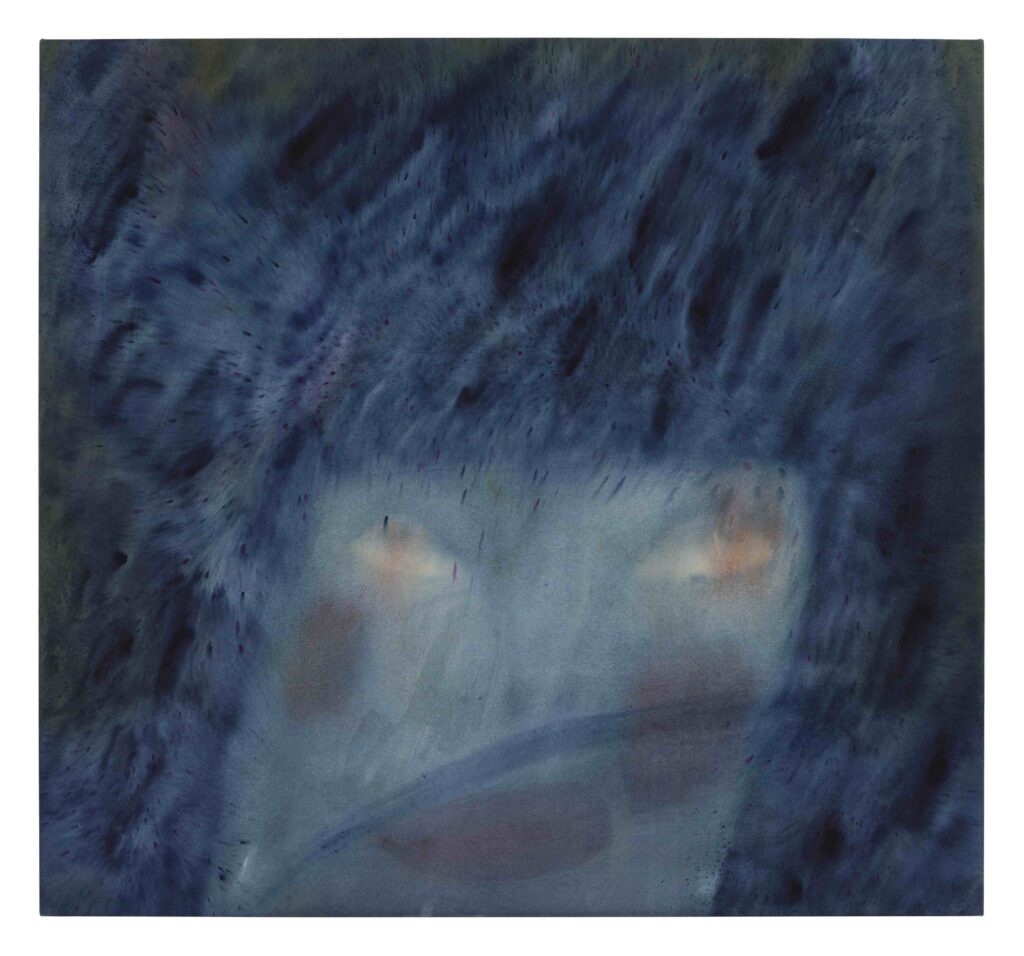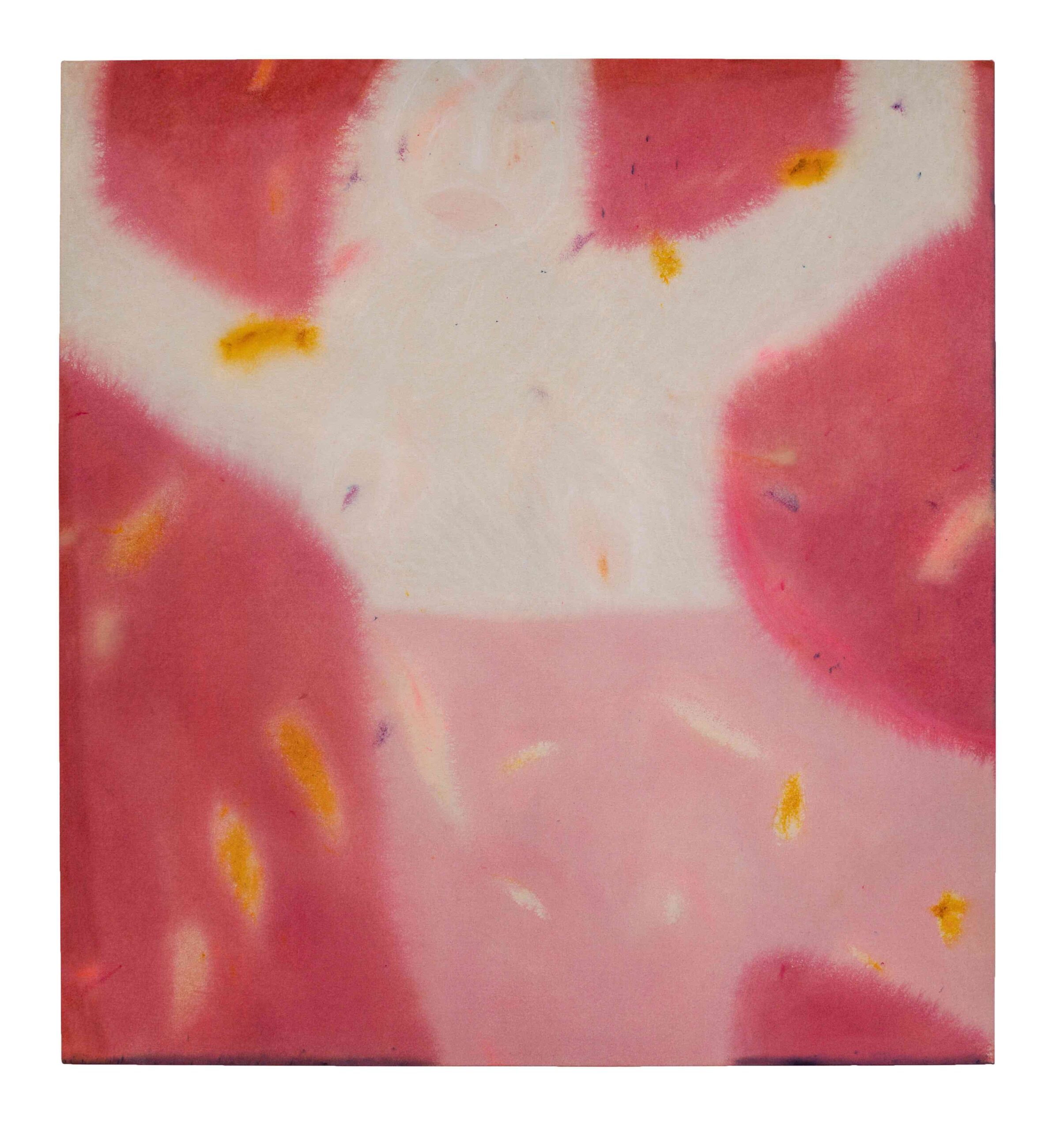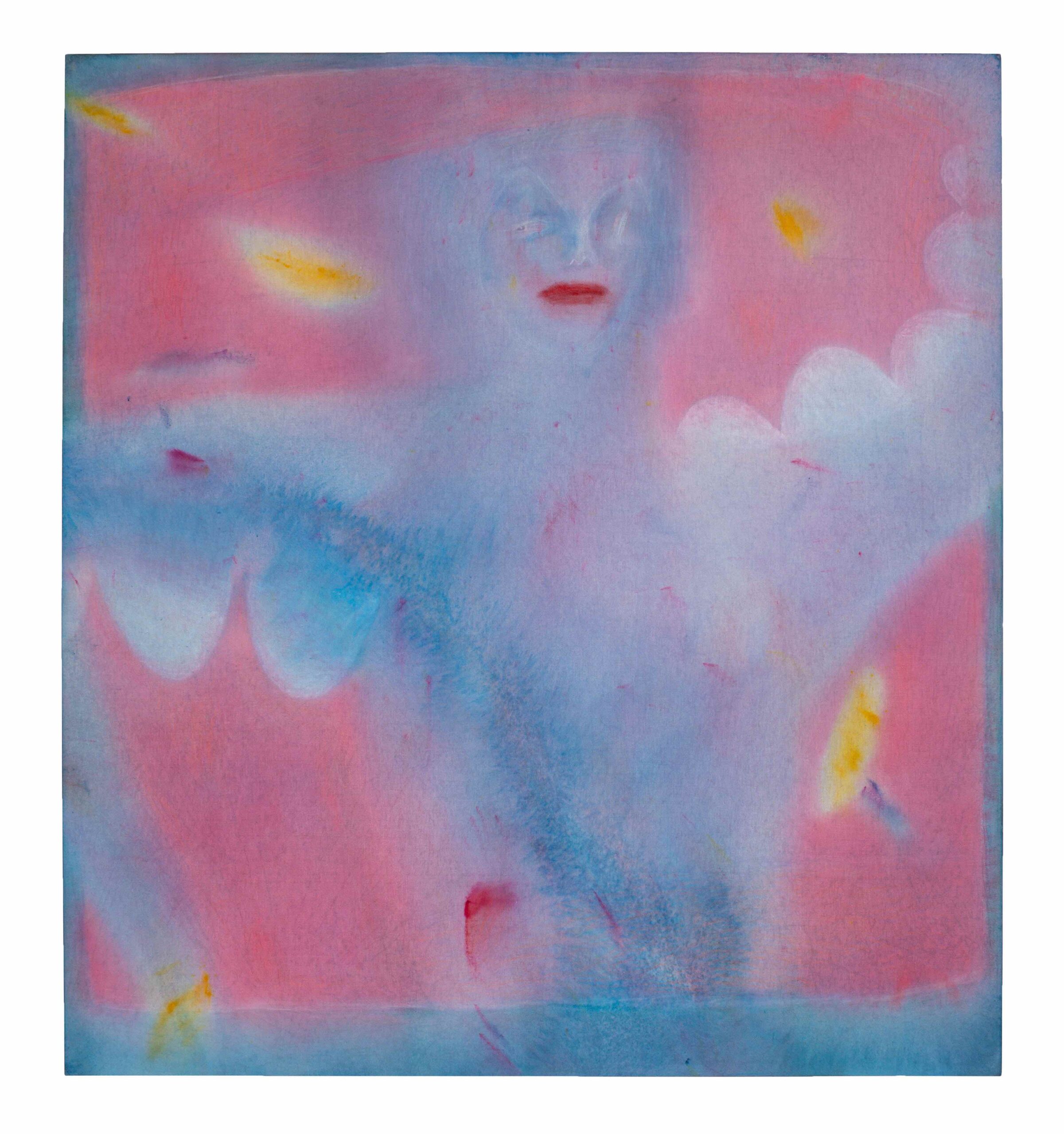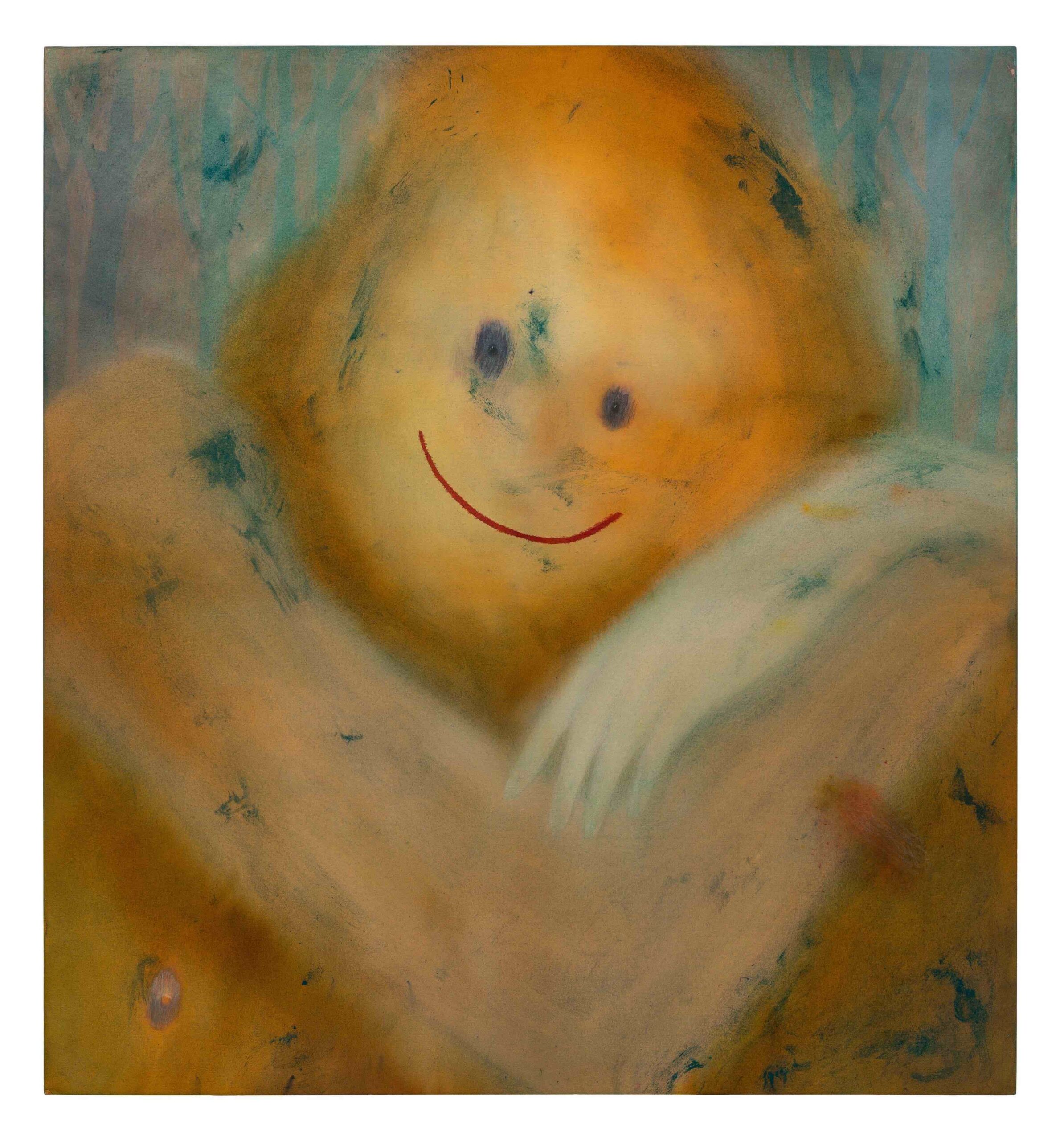
Painter and sculptor Loren Erdrich began mixing mediums on large canvases after a friend brought back vials of natural pigments from Morocco. “They did these crazy things on the paper that I was working with,” she says, such as swirling together and blooming into bursts of patterns. “When those ran out, I ended up finding dye that had similar characteristics—my work is very materials forward.” Erdrich now uses a combination of dye, powdered pigment mixed with water, and acrylic paint on canvas, letting the materials guide the final composition. “The dye is part of the fabric,” she says. “It soaks in and colors the actual fabric. I may occasionally have marks of other materials that sit on top of the canvas but really what you’re looking at is a large piece of fabric, the color of which has been changed.” Her most recent works are included in a solo exhibition, In a Certain Light, currently on display at Shrine Gallery in New York.
Erdrich’s images center on ethereal beings. These gauzy, amorphic figures are not portraits of anyone or anything in particular. “I’ve always been interested in that crossover point between inside and outside, what is seen and what can’t be seen,” she says. “That place where you have one foot in the world that you can see and one foot in the invisible world—it’s always been about giving light to everything else around us.” Erdrich says that when she creates these figures, she’s challenging the viewer to imagine what it would be like to live a life of unlimited existence, where dualities aren’t divided and opposites can appear together. “We live in this world that really wants these clear categories and borders,” she says. “But I’ve always seen the world as many things at once. How do I get everything? How do I talk about all of it that isn’t just the actual physical thing I see in front of me?”




